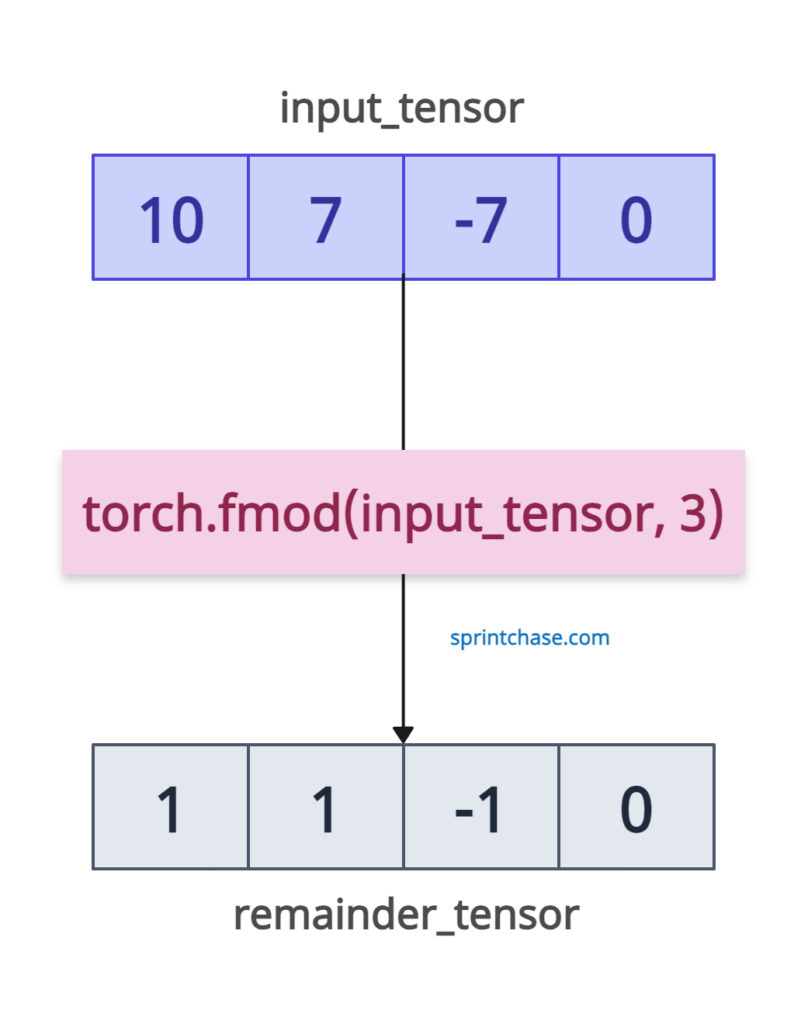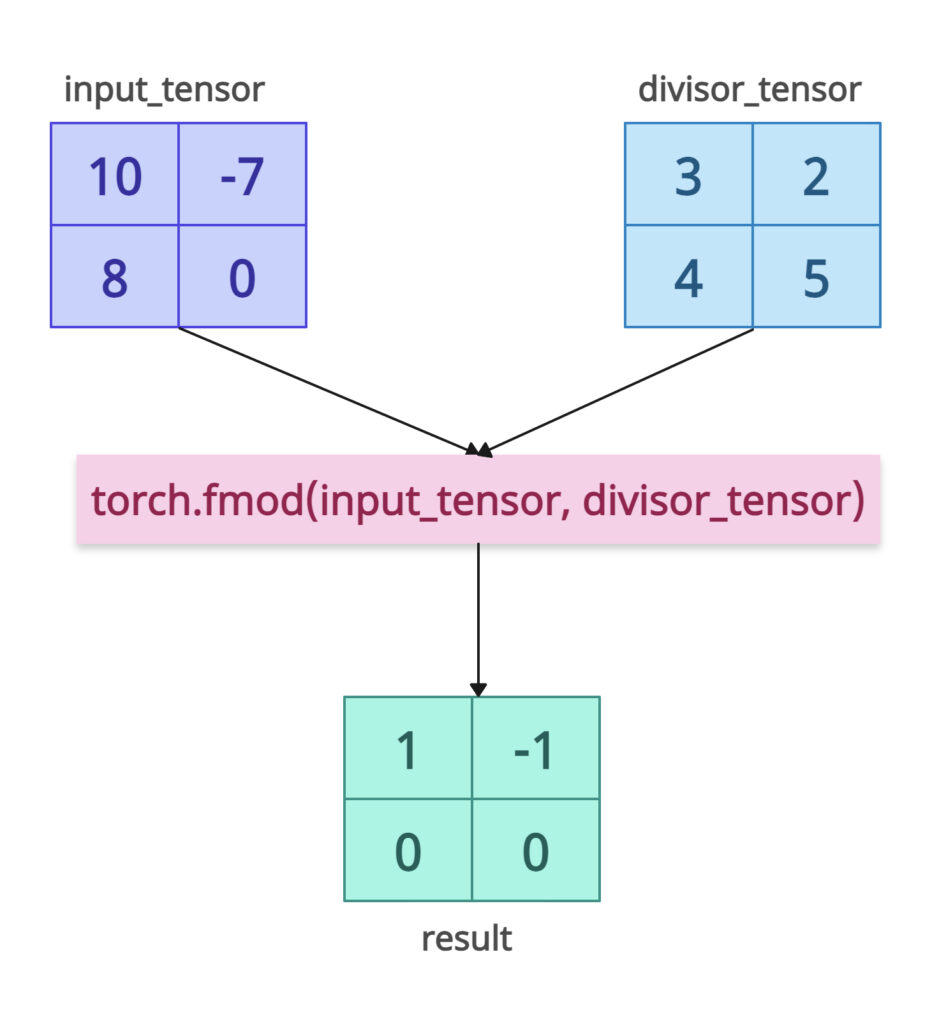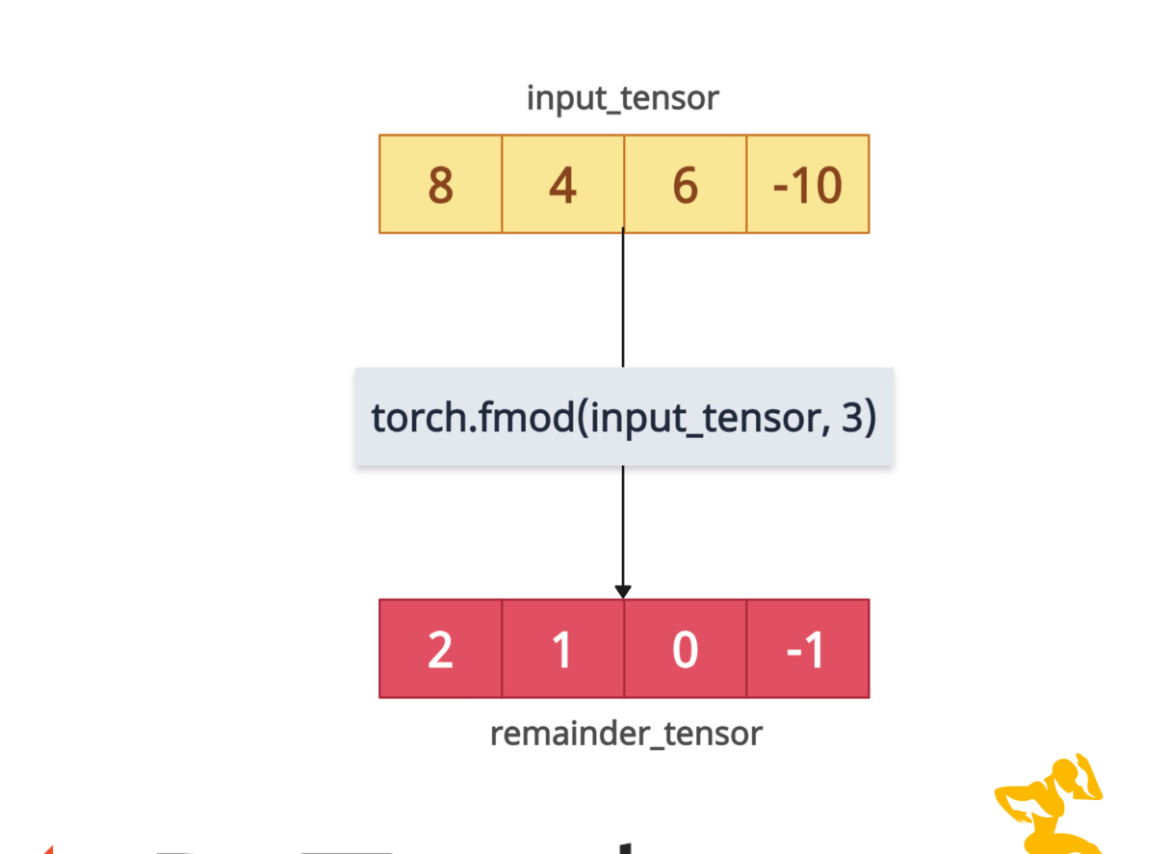The torch.fmod() method calculates the element-wise modulus (remainder) of dividing one tensor by another, following the C-style modulus operation. It returns a tensor containing the remainders of the division of each element in the dividend tensor by the corresponding element in the divisor tensor.

The output tensor has the same shape as the input when the divisor is a tensor.
Syntax
torch.fmod(input, divisor, out=None)
Parameters
| Argument | Description |
| input (Tensor) |
It represents the dividend tensor (the tensor to be divided). |
| division (Tensor or Scalar) |
It represents the divisor tensor or a scalar value by which to divide the input. |
| out (Tensor, optional) |
It is the output tensor to store the result. |
Element-wise modulus with Scalar Divisor
Let’s calculate the remainder of each element in a tensor when divided by a scalar.
import torch # Input tensor input_tensor = torch.tensor([10, 7, -7, 0]) # Compute modulus with scalar divisor remainder_tensor = torch.fmod(input_tensor, 3) print(remainder_tensor) # Output: tensor([ 1, 1, -1, 0])
Each element in input_tensor is divided by 3, and the remainder is computed.
For the value 10, 10/3 and the remainder is 1 because 3×3 = 9 and only 1 is the remainder to be 10.
For the value 7, 7/3, and the remainder is 1 because 2×3 = 6, and only 1 is the remainder to be 7.
For -7, the remainder is -1 because fmod preserves the dividend’s sign.
Element-Wise modulus with tensor divisor

We can perform a modulus between two tensors of the same shape. And the output tensor has the same shape as the input.
import torch input_tensor = torch.tensor([[10, -7], [8, 0]]) divisor_tensor = torch.tensor([[3, 2], [4, 5]]) result = torch.fmod(input_tensor, divisor_tensor) print(result) # Output: tensor([[ 1, -1], # [ 0, 0]])
In the above code, each element in input_tensor is divided by the corresponding element in divisor_tensor. For example, -7 % 2 = -1, and 8 % 4 = 0 because there is no remainder in this case.
In-place operation with “out” Parameter
You can store the result in a pre-allocated tensor for memory efficiency.
import torch input_tensor = torch.tensor([10, -7, 8]) divisor = 3 out_tensor = torch.empty_like(input_tensor) torch.fmod(input_tensor, divisor, out=out_tensor) print(out_tensor) # Output: tensor([ 1, -1, 2])
That’s all!





